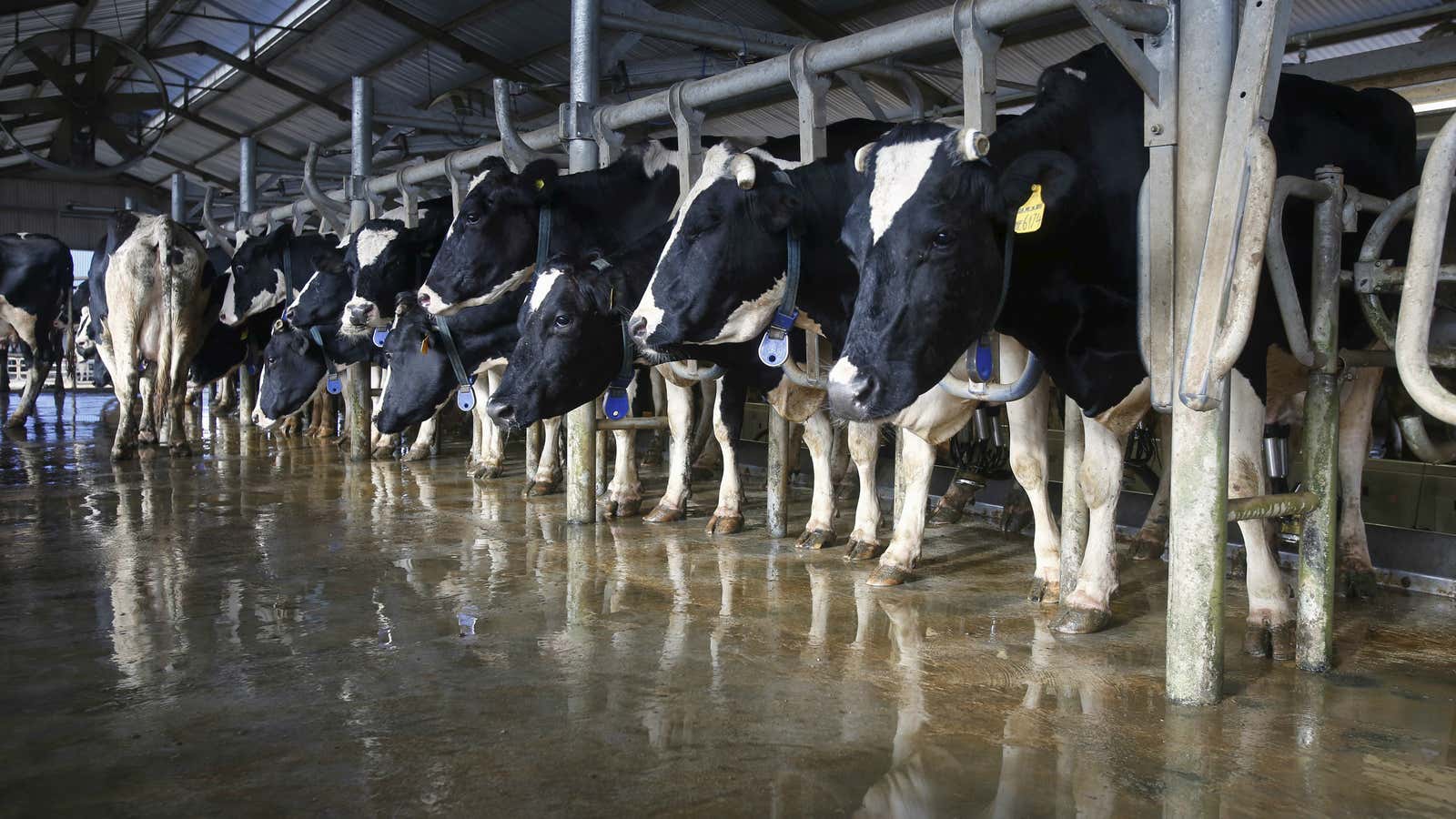Most people may think they know what fresh milk tastes like, but they’d be wrong. For this, you can blame fluorescent light bulbs, according to new research.
Luckily, a number of large retailers across the globe, including Walmart and Kroger, are switching their in-store lighting from fluorescent to LED. An unintended result of this switch is that within a matter of years, a majority of consumers will begin to notice their milk taste fresher.
For years, scientists have noted the negative impact of fluorescent lighting on certain foods. At the University of North Carolina, researchers determined the lighting made beer taste more “skunky“. And professors at Cornell University have studied its similar effects on milk (pdf). Until now, there’s been very little information on how LED would affect these same products. But new research shows it has less impact on milk than traditional fluorescent lighting, according to Susan Duncan, a food science and technology professor at Virginia Tech.
The research, published in the November issue of Journal of Dairy Science, shows that when given the choice between milk exposed to LED and fluorescent lighting, people prefer the taste of milk kept in LED, because it tastes fresher, Duncan surmised. That would mean that for decades, consumers buying milk stored under fluorescent lights have grown accustomed to lesser-quality milk.
“The bottom line is we’ve had generations of people who’ve grown up tasting fresh milk that they think was of quality flavor, but it’s not,” Duncan said. ”The change is going to be a lot sweeter, and you’re going to notice that sweetness,” Duncan said.
The in-store lighting switch is being done to cut energy use by up to 40%. Walmart hopes to switch entirely to LED lighting by 2020 and Kroger has already switched to majority LED.
Whether it will help slow a downward per capita consumption trend in countries such as the US remains to be seen.
What happens to milk under fluorescent lighting is fairly straightforward, as Duncan described it.
Imagine a ray of light hitting against certain molecules—including riboflavin—in a gallon jug of milk. As Duncan explains, the molecules absorb energy from the light and become more energetic. But because they cannot hold the extra energy for long, they start to break down, transferring the energy to neighboring molecules that, in turn, also get excited and break apart. Duncan compared the chemical reaction to bowling.
It’s a cascade of reactions with a cumulative effect that changes the milk’s odor and taste. Instead of being slightly sweet, as it is fresh after processing, the milk’s flavor becomes more neutral, with a subtle, lingering aftertaste. It may remain a little bit sweet, but it’s common to also have what Duncan described as a cardboard taste. The energy from LED lighting appears to have a less adverse effect on the milk, Duncan said.
The difference in taste was noticeable to two panels of taste testers used for the study. They were presented with samples of milk that had gone through varying degrees of light-related degradation. After tasting them, they ranked milk that had been exposed to LED lights higher in terms of overall acceptability, aftertaste, and freshness, than the milk that had been exposed to fluorescent lighting.
In Duncan’s estimation, the findings make a compelling case for food companies to reconsider the materials they use for packaging. Ideal packaging would be translucent (so people can see what they’re buying), but made with materials that push light wave energy away rather than absorbing it. That remains a feat of physics.




